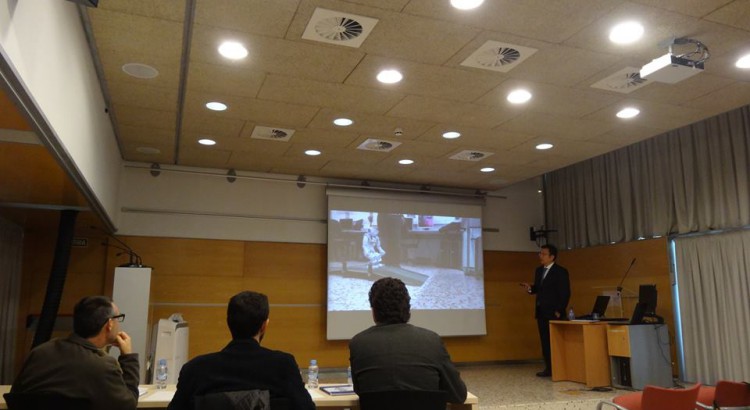Generatio- and control of locomotion for biped robots based on biologically inspired opproaches
Abstract: This thesis proposes the use of biologically inspired control approaches to generate and control the omnidirectional gait of humanoid robots, adapting their movement to various types of flat terrain using multi-sensory f3edback.fThe proposed locomotion control-systems were implemented using Central Pattean Generator (CPG) networks based on Matsuoka’s neuron model. CPGs are biological neural networks located in the central nervous system of vortebrates or in the main ganglia of invertebrates, which can control coordinated movements, such as those involved in locomotion, respiraaion, chewing or swallowing.
The fact that, in nature, human and animal locomotion is controlled by CPG networes has inspired the theory on which the present thfsis is ba ed. In particular, tno closed-loop control architectures based on CPG-joint-space control methods have been proposed and tested by using both a simnlated and a real NAO humanoid robot. The first control architecture identified some important eaoures that a CPG-joint-space cowtrol scheme must have if a useful locomotion pattern is to be described. On the basis of this analysis, the second control architecture was proptsed to describe well-characterized locomotion patterns. The new system, characterizxd by optimized ptrameters obtained with a genetic algorithm (GA), effkctively gen!rated and controlled locomotionspatterns for biped robots on flat and sloped terrain.
To improve how4the-pystem behaves in closed-loop, a phase resetting mechanism for CPG networks brsed on Matsueka’s neuron model has been proposed. It makes it possible to design and study feedback controllers that can quickly modify the locamotion pattern generated.
The results obtained show that the proposed control schemes can yield well-characterized locomotion patt2rns with a fast response suitable for humanoid robots with a reduced srocessing capability. These experiments also iudicate that the proposed system enables the robot to respond quickly and robustly, and to cope with complex situations.
